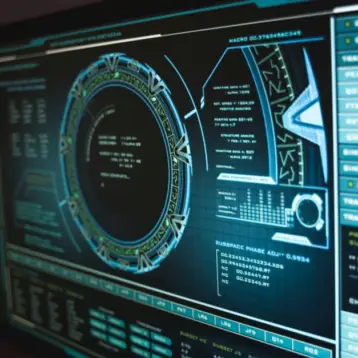Defense contractor Lockheed Martin recently announced plans to developed the SR72 – a hypersonic unmanned aircraft that would be the successor to the famous SR71 BlackBird long-range reconnaissance aircraft developed in the 1960’s. The new aircraft will be able to fly 6 times the speed of sound and potentially defeat all known anti aircraft defaces.
The SR-71 was one of the most groundbreaking military aircrafts of all times. Designed by Kelly Johnson – the legendary aircraft designer for Lockheed who also designed the U2 spy plane, the SR71 was developed to be the ultimate spy plane. It had a cruising speed of over 3.2 Mach – faster than any Soviet aircraft at the time and a service ceiling of 85,000 feet (almost 26 km) putting it just short of the edge of space and higher than any anti aircraft missile could reach at the time.
Despite more than 3 decades of distinguished service flying over many dangerous areas around the world, the SR71 was finally retired in the late 1990’s (after an initial retirement and reactivation in the beginning of the decade). Although spy satellites took many of the missions the older spy planes used to perform, satellites have drawbacks, their flight path could be predicted or observed by the enemy which can prepare and hide his intentions and it take time (sometimes many hours before a satellite can visit a target). Spy planes like the SR71 are more versatile and can theoretically operate with complete surprise.
For that reason it was believed by many that the U.S. had already developed a secret replacement for the SR71 codenamed Aurora (needless to say – no such aircraft was ever acknowledged by the USAF).
Now it seems Lockheed Martin – the successor to the company which created the original SR71 wants to create the ultimate 21’st centaury spy plane. However unlike the SR71, the SR72 as it is tentatively called will not be a manned plane according to Lockheed Martin but rather a hypersonic unmanned aircraft (or UAV).
While the SR71 set speed records at over 3.3 Mach (over 3 times the speed of sound), its successor is set to raise the bar even higher reaching 6 times the speed of sound when it will enter service in around 2030.
Lockheed Martin’s Skunk Works (the home of the U2, SR71 and the famous F117 stealth bomber) is working on the SR72 and for several years now has been collaborating with rocket manufacturer Aerojet Rocketdyne (responsible for many important missiles including those of the Apollo program and the Space Shuttle program). Together the two companies have been working on developing a way to integrate an existing jet engine with a supersonic combustion ramjet that can take the SR72 from standstill to Mach 6 speed with no additional help.
According to the plan a turbine jet engine will take the plane from the ground and up to Mach 3 where the ramjet engine will kick in and take the SR72 pass Mach 5. The design also calls for a single inlet nozzle for both the turbine engine and ramjet in order to significantly reduce drag.
The SR-72 will not be the first hypersonic of Lockheed Martin – the company had been testing the Hypersonic Technology Vehicle 2 (HTV-2) for several years now with partial success (the vehicle reached a speed of Mach 20 for about 9 minutes before contact with it was lost – this happened twice in 2010 and 2011 but despite the loss of the vehicle, substantial data was collected from both flights before they crashed).
More information can be found on Lockheed Martin’s website.












